City of Hope
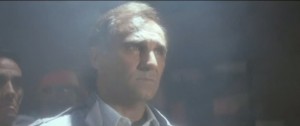 In a movie filled with memorably bad dialogue, the one line that stands out in Megaforce, Hal Needham’s highly expensive venture into homoerotic war movies, is the scene where Ace Hunter (played by Barry Bostwick with a headband and full body spandex) informs the villain Duke Guerera, played by Henry Silva, that he might as well stop being so villainous because “the good guys always win, even in the ‘80s.” It’s quite a meta moment and not just because this is the first time the movie suggested it was made in the present (1982), since most of the time it feigns being a futuristic sci-fi film. The reason it’s so odd is because from everything we see on screen Duke isn’t all that bad, and Ace is only considered good because the movie thinks so, as he could easily be seen as the leader of a vigilante terrorists who invade territories on a whim, or because someone asks them to, regardless of their questionable moral code.
In a movie filled with memorably bad dialogue, the one line that stands out in Megaforce, Hal Needham’s highly expensive venture into homoerotic war movies, is the scene where Ace Hunter (played by Barry Bostwick with a headband and full body spandex) informs the villain Duke Guerera, played by Henry Silva, that he might as well stop being so villainous because “the good guys always win, even in the ‘80s.” It’s quite a meta moment and not just because this is the first time the movie suggested it was made in the present (1982), since most of the time it feigns being a futuristic sci-fi film. The reason it’s so odd is because from everything we see on screen Duke isn’t all that bad, and Ace is only considered good because the movie thinks so, as he could easily be seen as the leader of a vigilante terrorists who invade territories on a whim, or because someone asks them to, regardless of their questionable moral code.
 Without being told, how one does figure out whom the bad guys are? Do the bad guys know they’re the bad guys? They shouldn’t, because everyone justifies their behavior to themselves, no matter how heinous. It’s simply subjective perception that allows us to judge who is good and who is bad, and that’s obviously a reductive concept that disregards any grey areas.
Without being told, how one does figure out whom the bad guys are? Do the bad guys know they’re the bad guys? They shouldn’t, because everyone justifies their behavior to themselves, no matter how heinous. It’s simply subjective perception that allows us to judge who is good and who is bad, and that’s obviously a reductive concept that disregards any grey areas.
 John Sayles’ City of Hope, an epic scale examination of the ins and outs of corruption in a city (never named, but likely in a lower rent part of New Jersey) is the prototypical look at how the bad guy never knows he’s the bad guy. That’s because the bad guy is always changing throughout. This isn’t a thriller filled with red herrings, but characters like the crooked building constructor, Joe (Tony Lo Bianco), who maneuvers political favors to protect his son Nick (Vincent Spano), or the felonious mechanic garage owner Carl, who sells out Nick to avoid being prosecuted for some past crime make more sense to us as the film goes along, especially as their past secrets are revealed. Sayles’ strategy is unique and sneaky without being self-serving. It’s a clever misdirection that Sayles even plays Carl, who seems to be controlling all of the characters like a marionette, suggesting that he’s going to rub our noses in the fact that he, as the writer/director, is the ultimate authority, a la M. Night Shyamalan’s character in his Lady in the Water. Sayles leads us on with what appears to be heavy-handed moralizing, something he’s been accused of in the past (such as with The Brother From Another Planet and Lone Star), Carl’s ultimate weakness is what defines him, as opposed to snubbing his nose at authority. It’s hardly a coincidence that it’s Joe and not Carl who utters, “I make things that weren’t there before.”
John Sayles’ City of Hope, an epic scale examination of the ins and outs of corruption in a city (never named, but likely in a lower rent part of New Jersey) is the prototypical look at how the bad guy never knows he’s the bad guy. That’s because the bad guy is always changing throughout. This isn’t a thriller filled with red herrings, but characters like the crooked building constructor, Joe (Tony Lo Bianco), who maneuvers political favors to protect his son Nick (Vincent Spano), or the felonious mechanic garage owner Carl, who sells out Nick to avoid being prosecuted for some past crime make more sense to us as the film goes along, especially as their past secrets are revealed. Sayles’ strategy is unique and sneaky without being self-serving. It’s a clever misdirection that Sayles even plays Carl, who seems to be controlling all of the characters like a marionette, suggesting that he’s going to rub our noses in the fact that he, as the writer/director, is the ultimate authority, a la M. Night Shyamalan’s character in his Lady in the Water. Sayles leads us on with what appears to be heavy-handed moralizing, something he’s been accused of in the past (such as with The Brother From Another Planet and Lone Star), Carl’s ultimate weakness is what defines him, as opposed to snubbing his nose at authority. It’s hardly a coincidence that it’s Joe and not Carl who utters, “I make things that weren’t there before.”
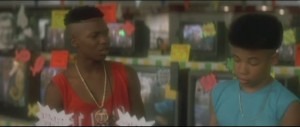 Where Sayles really throws for a loop in terms of developing progression is the way he establishes the city’s hierarchy. He uses long walk and talk shots without cutting allowing the characters to introduce themselves quickly without making sure the audience is totally clear on their motivations (which is what real conversations sound like to an outsider). Utilizing director of photography Robert Richardson’s penchant for gauzy over-lighting (a trait he was famous for when working with Oliver Stone on films like JFK) makes the characters look like they are in the middle of a police interrogation.
Where Sayles really throws for a loop in terms of developing progression is the way he establishes the city’s hierarchy. He uses long walk and talk shots without cutting allowing the characters to introduce themselves quickly without making sure the audience is totally clear on their motivations (which is what real conversations sound like to an outsider). Utilizing director of photography Robert Richardson’s penchant for gauzy over-lighting (a trait he was famous for when working with Oliver Stone on films like JFK) makes the characters look like they are in the middle of a police interrogation.
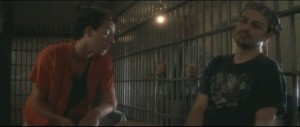 The characters are always defensive because of this (except when two young hoodlums are actually being interrogated, that’s when they go on the offensive), and only one person notices that they are behaving in such a manner, and that’s because she’s the only one to open herself up emotionally. She’s been ostracized before for it, when her husband hid her from view for years before their divorce (“it was like I was in the Moonies or something”). Sayles is constantly shifting power in and out of each character’s hands, and no one is able about to succeed without abusing it. There’s a general malaise and acceptance of the goings on, which was probably why it was better for Sayles never to reveal when the film takes place. We can guess that it would be the early ‘80s, since Nick is often talking about his brother being killed in “the war,” probably Vietnam, if one is able to parse the timeline correctly. If we know which war he is directly referring to, as opposed to filling it in ourselves based on our prejudices, he can’t make the film as varied as he’d like, because it would seem to be commenting specifically on the effects of the Vietnam War on the surviving family.
The characters are always defensive because of this (except when two young hoodlums are actually being interrogated, that’s when they go on the offensive), and only one person notices that they are behaving in such a manner, and that’s because she’s the only one to open herself up emotionally. She’s been ostracized before for it, when her husband hid her from view for years before their divorce (“it was like I was in the Moonies or something”). Sayles is constantly shifting power in and out of each character’s hands, and no one is able about to succeed without abusing it. There’s a general malaise and acceptance of the goings on, which was probably why it was better for Sayles never to reveal when the film takes place. We can guess that it would be the early ‘80s, since Nick is often talking about his brother being killed in “the war,” probably Vietnam, if one is able to parse the timeline correctly. If we know which war he is directly referring to, as opposed to filling it in ourselves based on our prejudices, he can’t make the film as varied as he’d like, because it would seem to be commenting specifically on the effects of the Vietnam War on the surviving family.
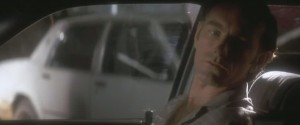 What Sayles manages to do in City of Hope is begin the film as a stagey theatrical adaptation, with most of the characters stiffly uttering their lines for maximum clarity, then shift into a more cinematic language of visual separations and divisions within racial lines, and finally move his way into the territory he’s most comfortable in, at least when he’s in message mode, and that’s a novel. He played the same games throughout Lone Star, also using some extraordinarily long and seemingly technically impossible tracking shots to show us how the characters are slowly severing from each other. The fact that City of Hope is more like a book in its final scenes is what differentiates it from other films that deal with potential race riots, community uprising, and police and political corruption, such as 1989’s Do the Right Thing. In that film, as with most Spike Lee films, the message is hammered at us unmistakably. In City of Hope, even as a lot of the scenes have a similar feel to ones in Do the Right Thing (such as the opening sex scene in the latter and the one between Joe Morton and Angela Bassett in the former), the novelistic approach allows Sayles to paint the city with a broader brush without getting too vague, as he’s not forced to make sure his ideas are always screaming at us.
What Sayles manages to do in City of Hope is begin the film as a stagey theatrical adaptation, with most of the characters stiffly uttering their lines for maximum clarity, then shift into a more cinematic language of visual separations and divisions within racial lines, and finally move his way into the territory he’s most comfortable in, at least when he’s in message mode, and that’s a novel. He played the same games throughout Lone Star, also using some extraordinarily long and seemingly technically impossible tracking shots to show us how the characters are slowly severing from each other. The fact that City of Hope is more like a book in its final scenes is what differentiates it from other films that deal with potential race riots, community uprising, and police and political corruption, such as 1989’s Do the Right Thing. In that film, as with most Spike Lee films, the message is hammered at us unmistakably. In City of Hope, even as a lot of the scenes have a similar feel to ones in Do the Right Thing (such as the opening sex scene in the latter and the one between Joe Morton and Angela Bassett in the former), the novelistic approach allows Sayles to paint the city with a broader brush without getting too vague, as he’s not forced to make sure his ideas are always screaming at us.
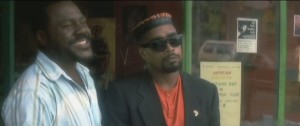 Even in the ‘80s, the good guys wouldn’t have liked to be screamed at.
Even in the ‘80s, the good guys wouldn’t have liked to be screamed at.
P.S. City of Hope is not on DVD and has never been available on any home video format in its original 2.35 aspect ratio. Not even the laserdisc is properly formatted, even if the back of the disc indicates it is. The above widescreen screencaps were taken from an airing on the Sony Movie Channel, where the film occasionally appears.



